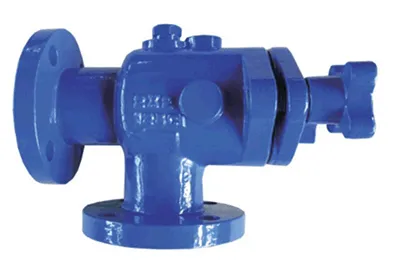10 月 . 01, 2024 18:51 Back to list
Exploring the Functionality and Applications of Two-Way Air Valves in Pneumatic Systems
Understanding Two-Way Air Valves Functionality and Applications
Two-way air valves are essential components in various pneumatic systems, playing a crucial role in controlling the flow of air within these systems. Their design allows for the regulation of air flow in two directions, hence the name two-way. This article delves into the functionality, design, and applications of two-way air valves, exploring how they are used to optimize performance in different industries.
Functionality of Two-Way Air Valves
At its core, a two-way air valve functions by either blocking or allowing the flow of air through a line. The basic operation can be achieved using different mechanisms such as solenoid, manual, or pneumatic actuation, depending on the specific requirements of the system. The two-way valve typically has two ports one for the input air supply and the other for the output. When the valve is open, air flows from the input port to the output port, and when closed, it prevents any air flow.
One of the critical features of two-way air valves is their ability to quickly switch between the open and closed states, which is essential in applications where timing and responsiveness are crucial. This rapid actuation aids in tasks like regulating air pressure, controlling air tools, and managing pneumatic cylinders.
Design Considerations
The design of a two-way air valve can significantly impact its performance, durability, and suitability for various applications. Key design elements include
1. Material The choice of material is vital for ensuring that the valve can withstand the operating pressures and environmental conditions it will face. Common materials include brass, stainless steel, and various plastics, each offering different levels of resistance to corrosion, temperature, and pressure.
2. Size and Port Configuration Two-way air valves come in various sizes and port configurations. The appropriate size must be selected based on the flow rate required by the application. Additionally, the configuration of the ports can affect how the valve integrates into the existing pneumatic system.
3. Actuation Type The actuation mechanism also plays a significant role in the valve's functionality. Electric solenoids are widely used for precise control, while manual levers may be used in applications where automation is not required.
4. Sealing and Durability High-quality seals within the valve are crucial to prevent leaks and maintain performance. The design should also account for wear and tear, particularly in environments where dust and debris may be present.
two way air valve

Applications of Two-Way Air Valves
The versatility of two-way air valves allows them to be used in a multitude of industries. Here are some notable applications
1. Manufacturing In manufacturing settings, two-way air valves are used to control the operation of pneumatic tools and equipment, ensuring efficient operation and safety measures are in place.
2. Automation In automated systems, these valves manage air flow to actuators and cylinders, allowing for precise control of machinery movements and processes.
3. HVAC Systems Two-way air valves are used in heating, ventilation, and air conditioning systems to regulate air flow, improving energy efficiency and comfort levels in buildings.
4. Transportation In the transportation sector, these valves help regulate air brakes and suspension systems, contributing to safety and stability.
5. Medical Equipment Two-way valves are also utilized in various medical devices, ensuring that air flow is managed effectively to maintain functionality and safety in critical care settings.
Conclusion
Two-way air valves are an integral part of many pneumatic systems, providing essential control over air flow in various applications. Their design, functionality, and versatility make them suitable for a broad range of industries, from manufacturing to healthcare. Understanding the importance of these valves can help businesses optimize their systems, improve safety, and increase efficiency. As technology continues to advance, we can expect further innovations in valve design and functionality, ensuring that they meet the evolving needs of modern industry.
In summary, whether in a factory, an automation system, or a hospital, two-way air valves play a pivotal role in ensuring that air flow is effectively managed, demonstrating the critical nature of even the smallest components in complex systems.
Share
-
Understanding the Differences Between Wafer Type Butterfly Valve and Lugged Butterfly ValveNewsOct.25,2024
-
The Efficiency of Wafer Type Butterfly Valve and Lugged Butterfly ValveNewsOct.25,2024
-
The Ultimate Guide to Industrial Swing Check Valve: Performance, Installation, and MaintenanceNewsOct.25,2024
-
Superior Performance with Industrial Swing Check Valve: The Essential Valve for Any SystemNewsOct.25,2024
-
Industrial Swing Check Valve: The Ideal Solution for Flow ControlNewsOct.25,2024
-
You Need to Know About Industrial Swing Check Valve: Functionality, Scope, and PerformanceNewsOct.25,2024